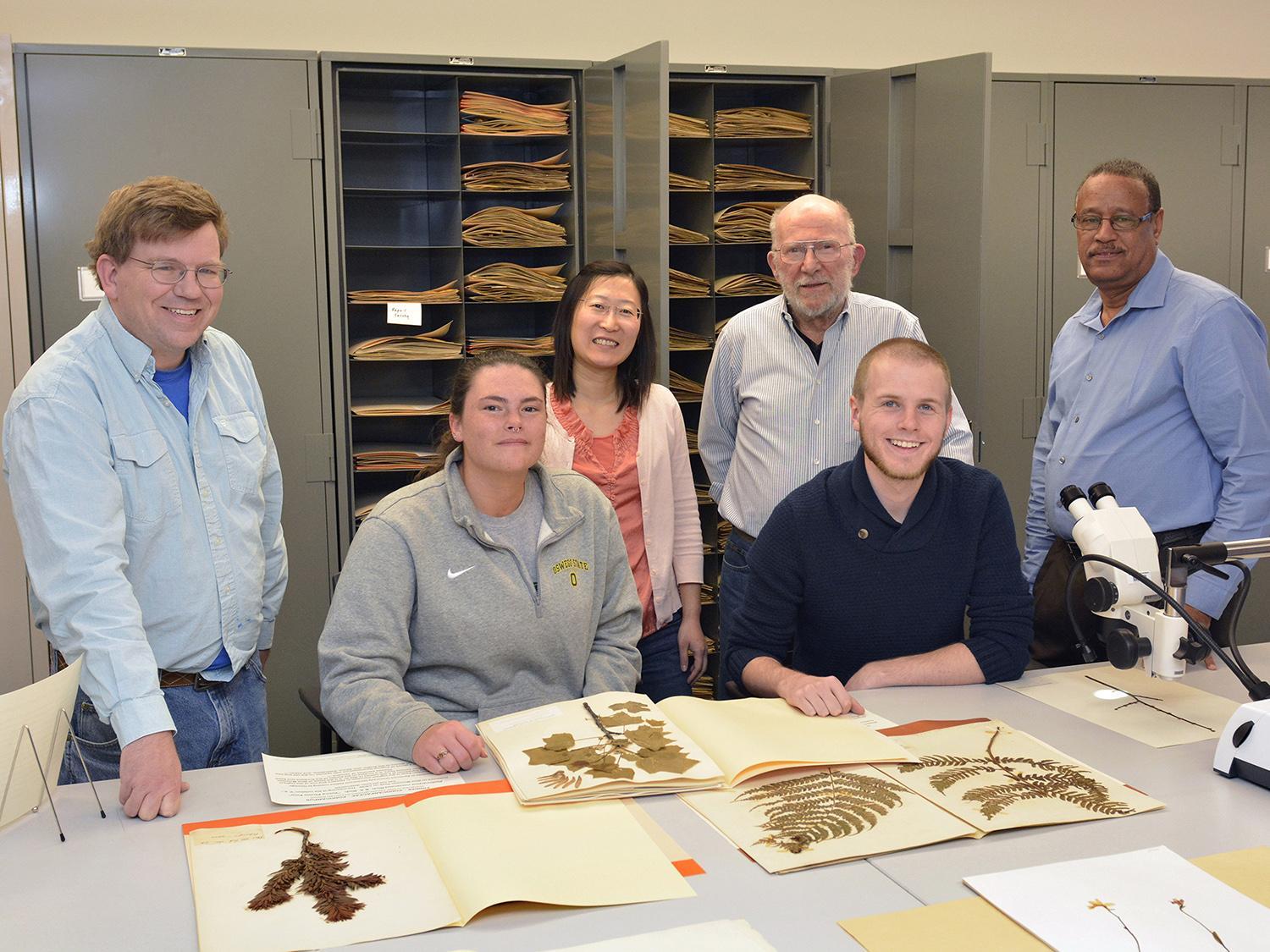Rice Creek Field Station has a rich variety of habitats and inhabitants, and sits within a diverse ecological landscape. The field station maintains a list of species that have been observed in the area around Rice Creek and Rice Pond from wetlands to upland forests, available through online and printed guides and checklists. Much of this biodiversity is further documented physically, through voucher specimens in our natural history collection.
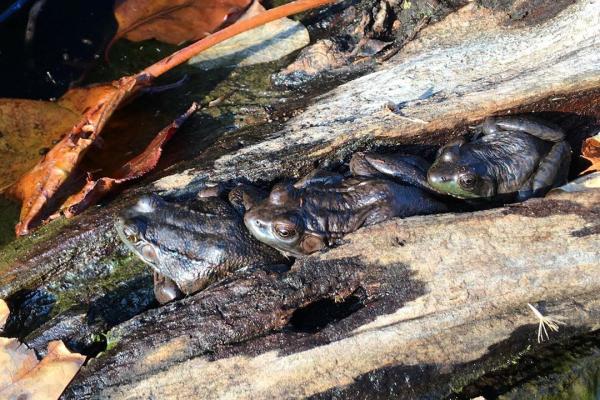
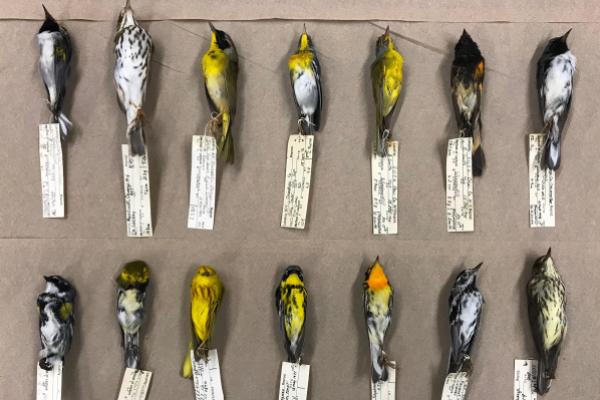
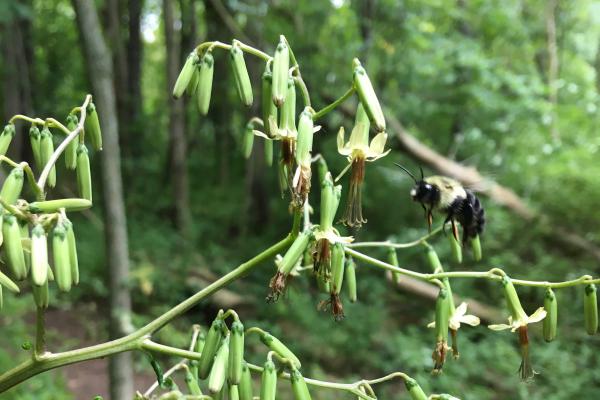
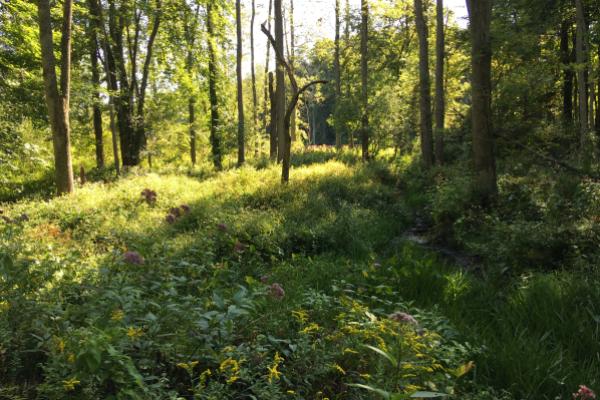
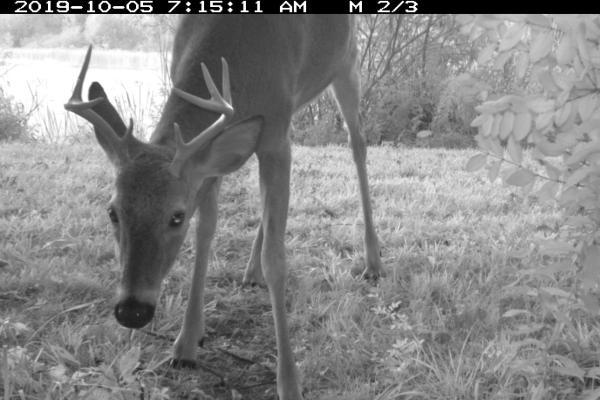
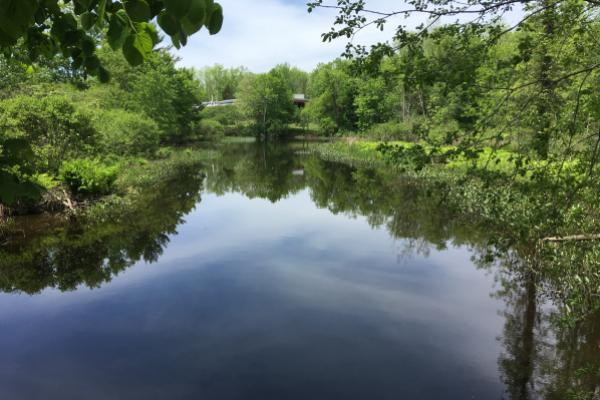
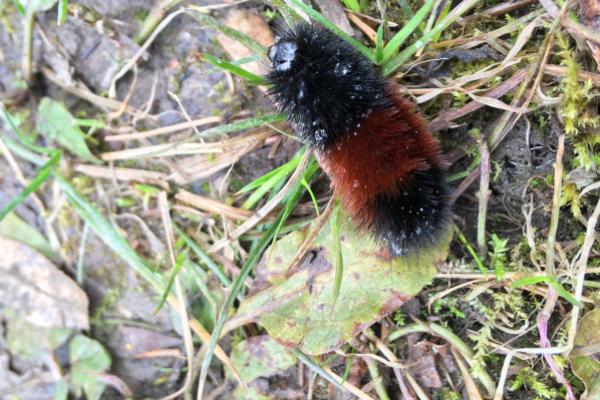
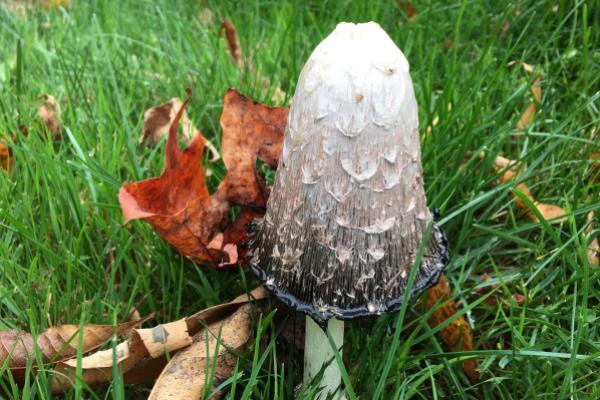
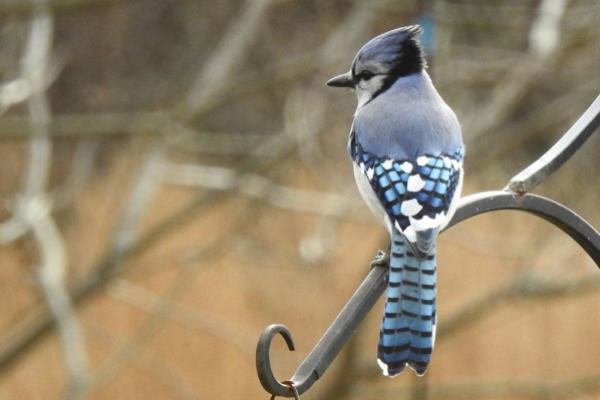
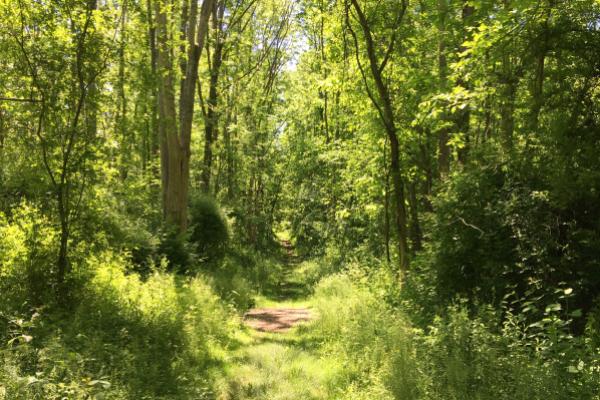
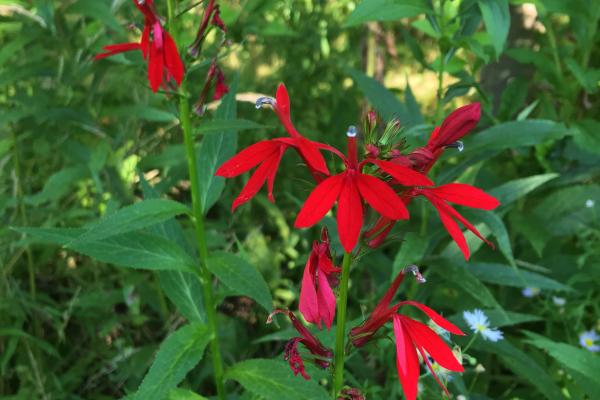
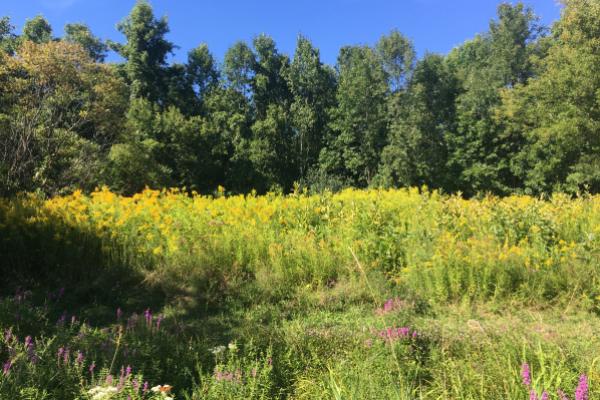
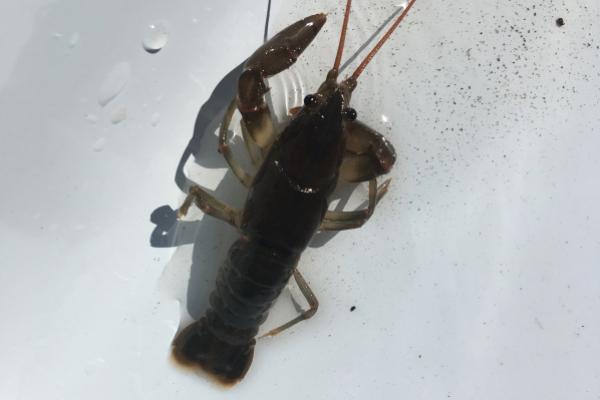
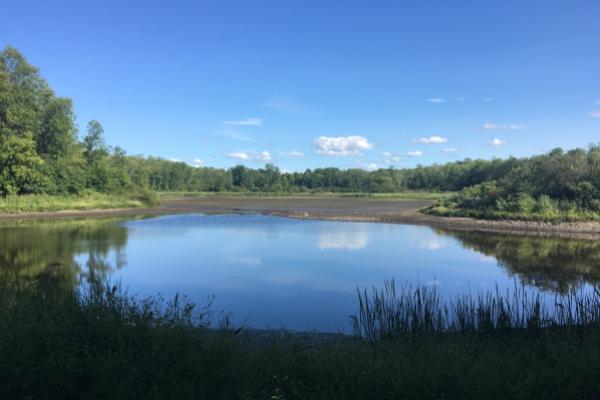
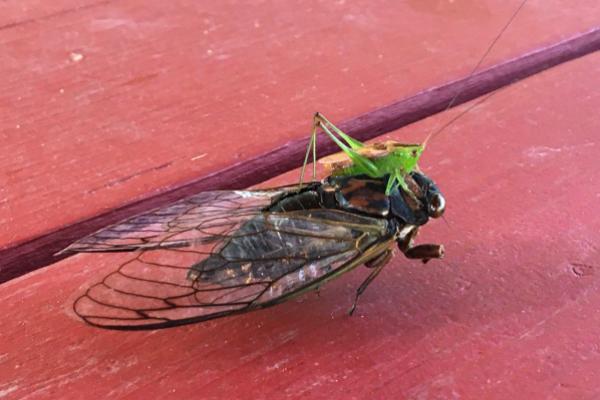
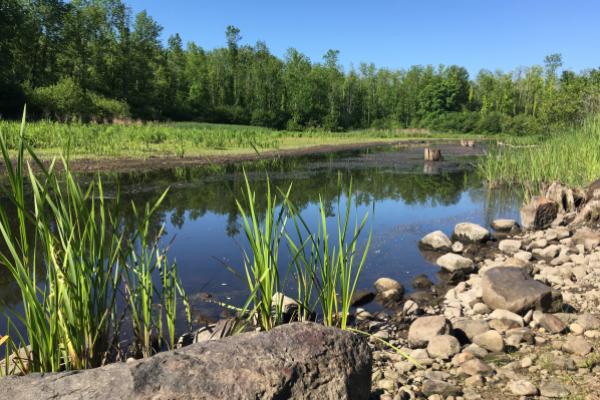
Rice Creek Flora and Fauna
species of plants
species of animals
species of fungi
Ecology
SUNY Oswego's Rice Creek Field Station offers a variety of habitats and natural history influenced by glaciers and people. Eastern and northern Oswego County contains one of the largest collections of wetland habitats in New York State. The county also includes transitional habitats marking the outer reaches of the Tug Hill Plateau. A unique area of coastal sand dunes extends along the eastern shore of Lake Ontario from Oswego County north into Jefferson County.
Local weather conditions are strongly influenced by Lake Ontario with cool to warm summers and cold winters. The average annual temperature is 8-9 degrees C (45 degrees F) and the average annual precipitation is about 90 cm (36 in). Typical manifestations of the influence of the lake on local climate are late autumns, late springs, and lake-effect snowfall.
The field station occupies approximately 130 ha (300 acres) of varied habitats, including open fields, mature forests, shrub lands, and woods representing several stages of succession.
The mature upland forest of the Oswego area includes maple-basswood forests which are most common on the Lake Ontario coastal plain and beech-maple communities which are widespread in New York State. Well drained soils may also support stands of Appalachian oak-hickory forest. Red maple-hardwood swamp is the most common wetland forest type. The landscape in the vicinity of the City of Oswego contains small patches of mature woods and wetlands intermixed with successional woodlands, shrub lands, fields, agricultural properties, and rural and suburban residential areas.
Rice Creek Field Station is nestled within a north to south oriented drumlin landscape typical to Central New York. Rice Creek and Rice Pond bisect two drumlins that can be identified by the roads along their ridges: Thompson Road to the east of the Rice Creek and Cemetery Road to the west. The drumlin situated along the eastern edge of the properties reaches an elevation of approximately 123 m (405 ft) above sea level.
A 10.4 ha (26 acre) pond at 82 m (270 ft) was formed by the construction of a dam on Rice Creek at the time the field station was established. Marshes and floodplain forests surround much of the pond and extend upstream and downstream along Rice Creek.
Oswego itself is a port city located on Lake Ontario at the mouth of the Oswego River. The Oswego River drains one of the largest watersheds in New York State. A unique area of drumlin topography extends west from Oswego through neighboring Cayuga, Wayne, and Seneca Counties. Along the shore of Lake Ontario this topography has eroded to form bluffs alternating with a series of interdrumlin wetlands consisting of bays, lagoons, marshes, swamps, and fens. Eastern and northern Oswego County contains one of the largest collections of wetland habitats in New York State. The county also includes transitional habitats marking the outer reaches of the Tug Hill Plateau. A unique area of coastal sand dunes extends along the eastern shore of Lake Ontario from Oswego County north into Jefferson County.
1960s
Most of the field station properties were in pastures, hay fields, or orchards when SUNY Oswego acquired them in the early 1960s. As late as the mid-1950s, cows grazed where the pond, lawns and buildings are now located. An area of old-growth hardwood forest, probably maintained as a farm woodlot, remained on the western flank of the drumlin in the northern part of the properties. Conifer plantations were established as the field station was being developed. Other areas were allowed to proceed through the initial stages of secondary succession characteristic of the region, augmented by the introduction of certain European and Asian trees and shrubs as was the common theme of wildlife management at the time. Most of the second growth vegetation on the property is now at least fifty years old. Abandoned orchards, as well as numerous stone walls and hedgerows from the land's former agricultural uses, dot the property.
1980s
By 1983, it was apparent that maintenance of open habitat, with its associated plants and animals, would not be possible without occasional mowing to control the development of trees and shrubs. Necessary clearing was done and three fields were established, one on the outlet channel of Rice Pond (the "Lower Field"), one on level land near the top of the drumlin (the "Upper Field"), and one on the slopes of the western flank of the drumlin (the "Middle Field"). These areas, along with a few smaller clearings, are maintained by mowing with a brush hog on a four year rotation. A system of foot trails is maintained to provide access to different areas of the property for research, education, recreation, and management. Current management practices are aimed at the maintenance of maximum habitat diversity and, to the extent possible, management and control of non-native invasive species. An Herb Garden located near the pavilion and plantings adjacent to the building attract and support wildlife. Rice Creek's habitats and features support a diverse number of plants and animals.
Animal and Plant Guides
Wetlands, fields, hedgerows, forests, remnants of orchards and conifer plantation provide a rich diversity of habitats for plants and animals at Rice Creek. Browse our guides to learn more about the species at Rice Creek.
Online Photographic Guides
Comprehensive guides to all species of each group known to occur at Rice Creek (67 butterflies and 725 plants), including species descriptions and locations where they can typically be found at the Field Station.
Species Checklists
Checklists of all species of each group known to occur at Rice Creek Field Station. Print versions of the first two are available at the main building.
Printed Field Guides
Fully-illustrated field guides specific to Rice Creek flora and fauna are available to peruse and borrow at the Field Station.
Collections
Collections are museums of vertebrate and invertebrate animals. Animal specimens may be preserved dry (mammal and bird skins), wet (stored in ethanol), or in skeletal form, and are stored in a special climate-controlled room. Rice Creek's specimen collection supports both teaching and research. SUNY Oswego zoology and biology students frequently examine specimens in their labs to learn to identify animals and study their diversity, evolution, and ecology. Researchers have used our collection to examine the past prevalence of amphibian diseases. We also use specimens during outreach programs to educate our community about local species and their ecology.
Herbarium
Herbariums are plant museums containing a collection of dried and pressed plant specimens. Students and researchers use herbariums for plant identification, to study the geographic distribution of plants, to document changes in vegetation over time, and as a reference for nomenclature and the writing of field guides/manuals. Our herbarium holds 3200 (sub actual number) specimens collected at Rice Creek, including voucher specimens for 492 of our 724 species of bryophytes and vascular plants. Vouchers are representative samples of plants used in research to authenticate the sources of data. A larger herbarium containing 52,000 specimens resides in the Richard S. Shineman Center at SUNY Oswego's main campus.
Donating Specimens
Rice Creek Field Station holds a DEC permit to accept deceased animals and add them to our teaching and research collections. Fresh specimens with little to no damage are the most useful. If you find a deceased animal that you would like to donate, first call RCFS at 315-312-6677 to ensure we can accept the specimen and to arrange for specimen drop-off. It is very important to note the date, time, and location where you found the animal: we will ask you to fill out a card with this information at the time of your donation. All specimens should be placed in sealed plastic bags (ideally clear) and kept in the freezer until they can be donated. Be sure to wash your hands and inspect for ticks or fleas after packaging the animal. Once donated, the specimen will be used by biology and zoology students studying animal identification, ecology, evolution, and diversity and by SUNY Oswego researchers.
Sick or Injured Animals
Unfortunately, Rice Creek cannot accept live animals. The NYS DEC maintains a database of wildlife rehabilitators in each county. Please reach out to these rehabilitators directly. You can also call our local Region 7 DEC Wildlife Office (607-753-3095 x247) during normal business hours for assistance; weekends and evenings, call the Environmental Conservation Officers' dispatch line (1-877-457-5680). Remember that animals that appear orphaned may still be receiving parental care and the best course of action is often to leave them alone.




